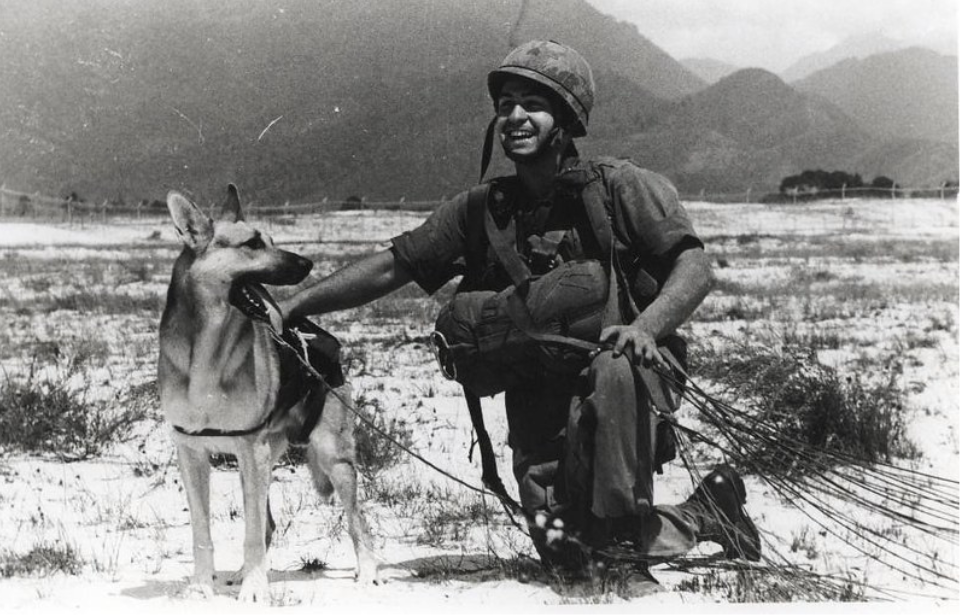During the Vietnam War, alongside numerous brave soldiers, there were also war dogs, fearless canines that served an essential function in the conflict. Trained for sentry duty, reconnaissance, and tracking, they possessed remarkable skills for identifying threats and offered crucial assistance to their human counterparts. These dogs were deemed heroes, acknowledged for their role in safeguarding around 10,000 American lives.
Not the first war dogs
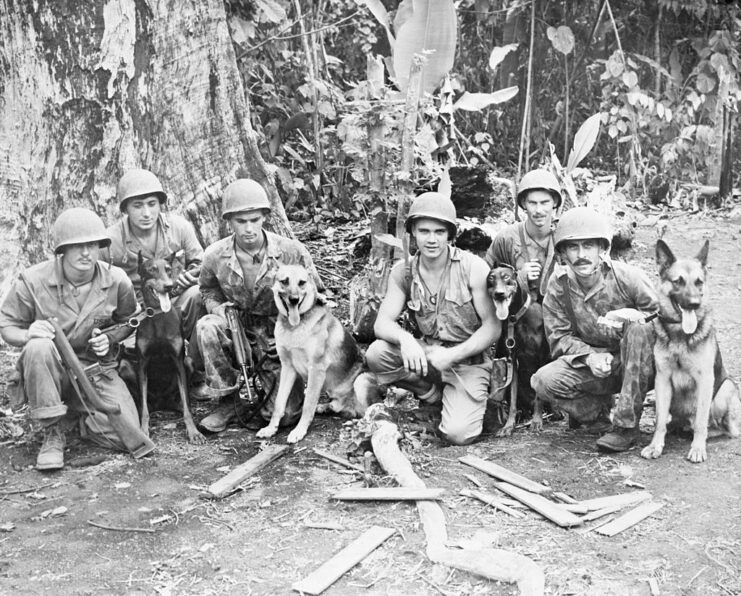
The dogs that served in Vietnam weren’t the first canines used in combat; these animals have a long history in warfare.
It was during World War II that the Americans forces began training them for military purposes beyond delivering messages on the battlefield. From 1943-45, the US Marine Corps trained dogs donated to the war effort for action in the Pacific Theater. While all breeds were eligible, the Doberman Pinscher was designated as the official Marine dog.
Their success in the conflict led the US military to establish K9 units again during the Vietnam War. While records prior to 1968 are scarce, from that year until the end of the conflict, 5,000 dogs were put into service, with 10,000 servicemen working as their handlers.
Unlike their human counterparts, who returned to the United States after their tours, these dogs remained in Vietnam and were passed on to different handlers.
Use as tracking dogs in Vietnam
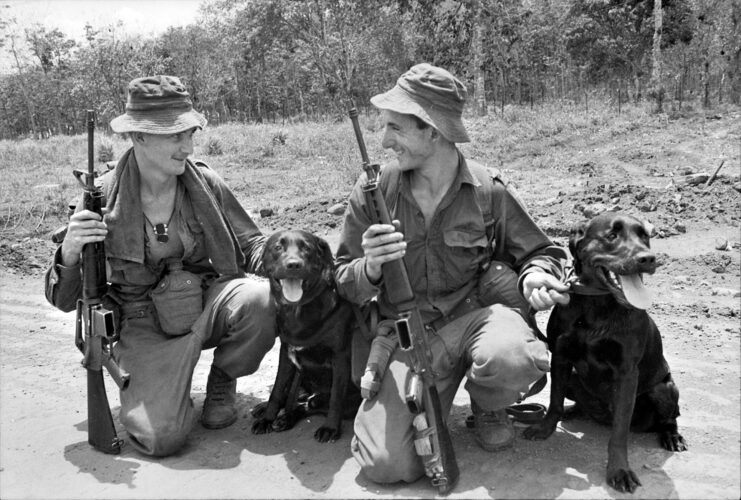
One breed of dog used in Vietnam was the Labrador Retriever, which served mainly in tracker roles. Their training meant they could alert their handlers to snipers, tripwires and weapons caches. Rick Claggett, a veteran of the war, explained that they were excellent at following blood trails. If troops were looking for an injured enemy or missing personnel, the Lab teams, made up of the dog, its handler, a cover man, the team leader and a visual tracker, were called.
Labs were picked specifically over other tracking dogs, like Beagles and Bloodhounds, because they were significantly quieter than these other breeds.
The Australians created their own K9 units made up of 11 shelter dogs adopted from Sydney. Named after Roman emperors, they were expected to serve in Vietnam for three years. Although it seems that they served with US troops to a degree, it was certainly German Shepherds that made up the bulk of the Aussies’ war dogs.
Sentry and scouting duties
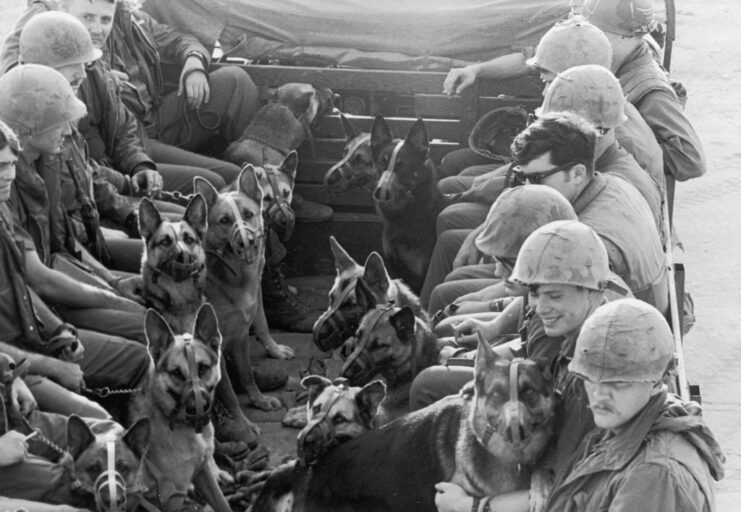
During the Vietnam War, the war dogs displayed remarkable versatility, fulfilling roles such as sentry duty, scouting, mining, tunneling, and tracking. Rick Claggett collaborated closely with Big Boy, a canine scout, explaining that their responsibility was to guide patrols while the dog sought out potential booby traps and ambushes. This position, being the first to advance, was dangerous, with Claggett noting it as having the third highest mortality rate in the conflict.
Sentry dogs maintained patrols along the perimeters of US outposts, serving as the primary defense against enemy attacks. German Shepherds were also used on water patrols, adeptly trained to detect hidden enemy soldiers beneath the water’s surface, poised to strike amphibious vessels. However, these skilled teams quickly became targets of Viet Cong guerrillas, incentivized attacks on them by offering bounties for the killing of dogs or their handlers, leading to frequent assaults on their kennels.
Nemo A534
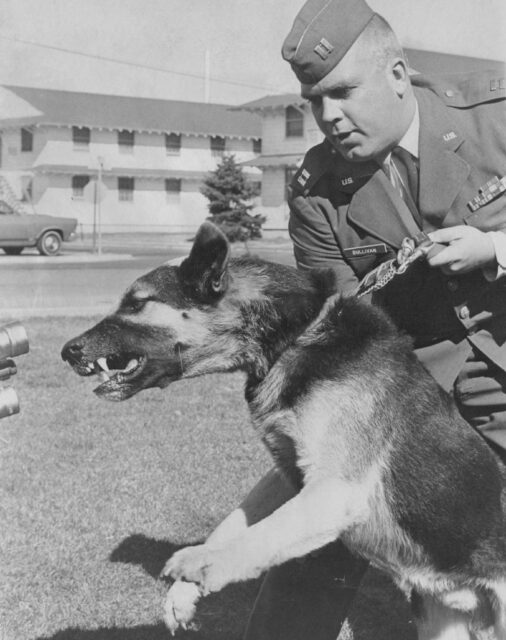
The bonds forged between these partners were truly remarkable. There are many stories of this, with perhaps none more famous than that of Nemo A534 and his handler, Capt. Robert Throneburg.
On December 4, 1966, while stationed at Tan Son Nhut Air Base, the Viet Cong attacked. During their patrol, Nemo alerted Throneburg to a group hidden nearby. The pair attacked, killing two enemy fighters, but were soon injured themselves. Nemo was shot under his right eye, with the bullet exiting through his mouth, while Throneburg was shot through his left shoulder twice.
Despite being seriously injured, the dog crawled onto his handler’s body, where he waited until medics could arrive – he wouldn’t let anyone else near him. Throneburg received the Bronze Star with V and two Purple Hearts, while Nemo was retired and sent back to the United States, where he served as a recruiting dog until his death.
Man’s best friend
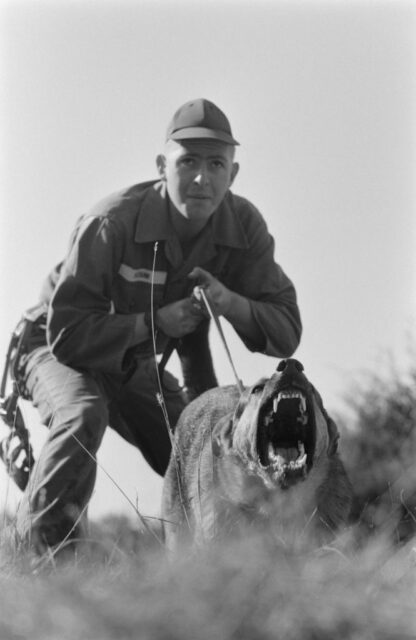
These dog/handler teams were invaluable to the war effort in Vietnam. They were credited with saving the lives of around 10,000 servicemen, thanks to their various roles in the conflict. James Mulligan handled scout dog Rickey, who “never walked our patrol into an ambush or any booby traps. He alerted on 45 ambushes, five in one day.”
While these actions were appreciated by the men that served alongside them, these dogs weren’t made a priority when the war came to an end. Of the roughly 5,000 that served, around 232 were killed in action (KIA) and another 200 were assigned to posts outside of the US. The remainder were either left in the hands of the Vietnamese or abandoned. At least 2,000 were simply euthanized.
The US government viewed them as “equipment” and didn’t want to fund their trips home. Having built such strong bonds, many soldiers wanted to bring their comrades back to the US with them, but were still told no, despite repeated appeals to Congress and the press.
More from us: Battle of Khe Sanh: The Siege That Shook America
The service performed by these canines never went forgotten, and there are countless interviews with veteran handlers who still remember their partnerships fondly. In 2019, they were publicly remembered when the Vietnam War Dog Team Memorial was unveiled at Motts Military Museum, Inc. in Ohio.
